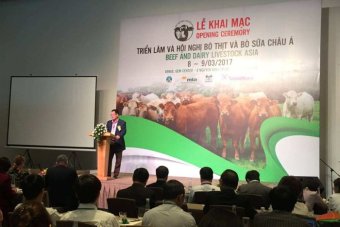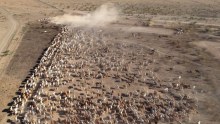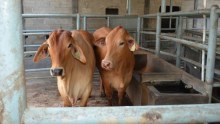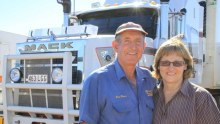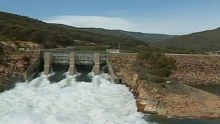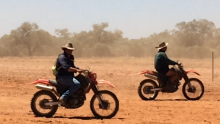Asia beef conference in Vietnam hears of market price pressures, as boxed meat and live cattle go head to head
Posted
The number of Australian cattle exported to Vietnam in 2017 will largely be dictated by price, with importers baulking at the high cost of stock, according to LiveCorp.
High cattle prices were discussed at last week's Beef and Dairy Livestock Asia conference in Ho Chi Minh City, with industry working to reassure meat buyers that market forces were at play, driven by a cattle shortage.
Organised by Meat and Livestock Australia (MLA) and LiveCorp as part of their joint Live Export Program (LEP), guest speakers at the event presented on a range of topics including animal nutrition, breeding, welfare and feedlotting.
Cattle export numbers to Vietnam hit a peak in 2015 with 321,727 head and slid to 191,808 in 2016, according to MLA figures.
But the sustained high price, which rose to about $3.30 per kilogram live weight, has taken a toll on importer profit margins.
Harder to compete against local cattle
LiveCorp chairman David Galvin said it remained difficult to predict how the market might perform this year.
"With the high cattle prices, it's harder to compete against local cattle in Vietnam or cattle from across Thailand, Cambodia or Burma," he said.
"The high prices are what's probably driven a lot of the slowdown of cattle coming in here.
"I would suggest if prices start to trend down a bit, we'll be more competitive, with our competitors being boxed beef, Indian buffalo and other live cattle.
"I think we have to reinforce to people buying our cattle that [high prices] are not anything but market pressures in Australia."
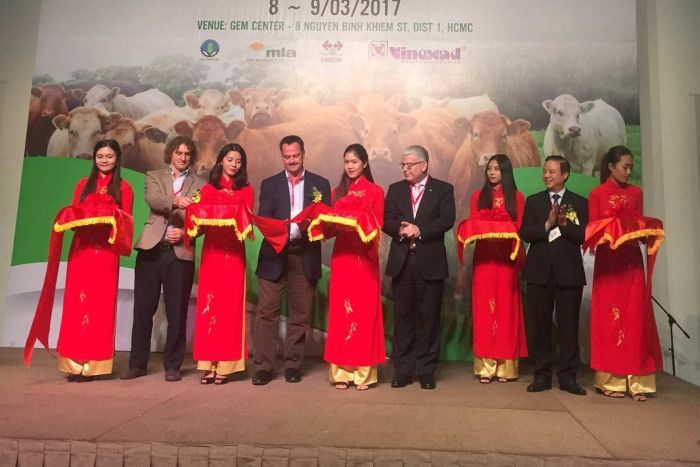 Photo:
Michael Patching and David Galvin on stage with the Australian ambassador to Vietnam Craig Chittick. (Supplied: Ngoc Tun)
Photo:
Michael Patching and David Galvin on stage with the Australian ambassador to Vietnam Craig Chittick. (Supplied: Ngoc Tun)
Work improving animal handling will continue
Under the LEP, many millions of dollars have been spent in Asian cattle markets training workers within the supply chain to improve animal handling.
Mr Galvin said the intensity with which the program had been rolled out, particularly since 2011, would continue.
"We're about continuous improvement in all our markets in cooperation with all our exporters and importers," he said.
"There's no diminishment of the effort that we're putting into ensuring that Australian animals are treated in the best possible and most humane way.
"We're also putting more effort into the breeding side of cattle, and assisting where we can with Indonesia in breeding and their desire to be more self-sufficient in the breeding of their own cattle."
Renewed animal welfare push for Australian stock in Vietnam
The LEP conference followed the outcome of an investigation released by the Department of Agriculture that found animals filmed being struck with a sledgehammer in a Vietnamese abattoir last year, were in fact Australian.
The report also found multiple other breaches of the Exporter Supply Chain Assurance System at other facilities, including ineffective stun gun use, consciousness checks not being performed, and general poor animal handling.
As a result, one exporter had minor and major non-compliance checks recorded against it, and three abattoirs were suspended and removed from the approved supply chain.
MLA manager livestock services Vietnam, Michael Patching, said the industry was continuing to invest heavily in overseas facilities to ensure animal welfare was maintained.
"Through the incident we saw in June last year there have been very rapid developments and improvements in the traceability and control systems that exporters are now implementing here," he said.
"I am quite certain that Vietnam now has probably the most robust traceability system operating in the world in terms of how we're trying to monitor the movements of our Australian cattle.
"There has been a lot of pressure but there has been a very good response in a very difficult environment."
Boost for Vietnamese industry
Dr Patching said it was important for the industry to continue to play a strong role in the growth and development of the Vietnamese beef sector.
"The industry, before Australia started investing in it and exporting cattle here, was at a very fragmented low base," he said.
"The Australian industry coming over here, investing and sending cattle here has accelerated the development over here and we have some very good partners.
"We've assisted, through a lot of support by exporters, to develop a very good structure for their feedlot industry, and a lot of our focus is now working to help them mature their abattoir market."
Topics: beef-cattle, cattle-feedlots, darwin-0800, katherine-0850, indonesia, vietnam


